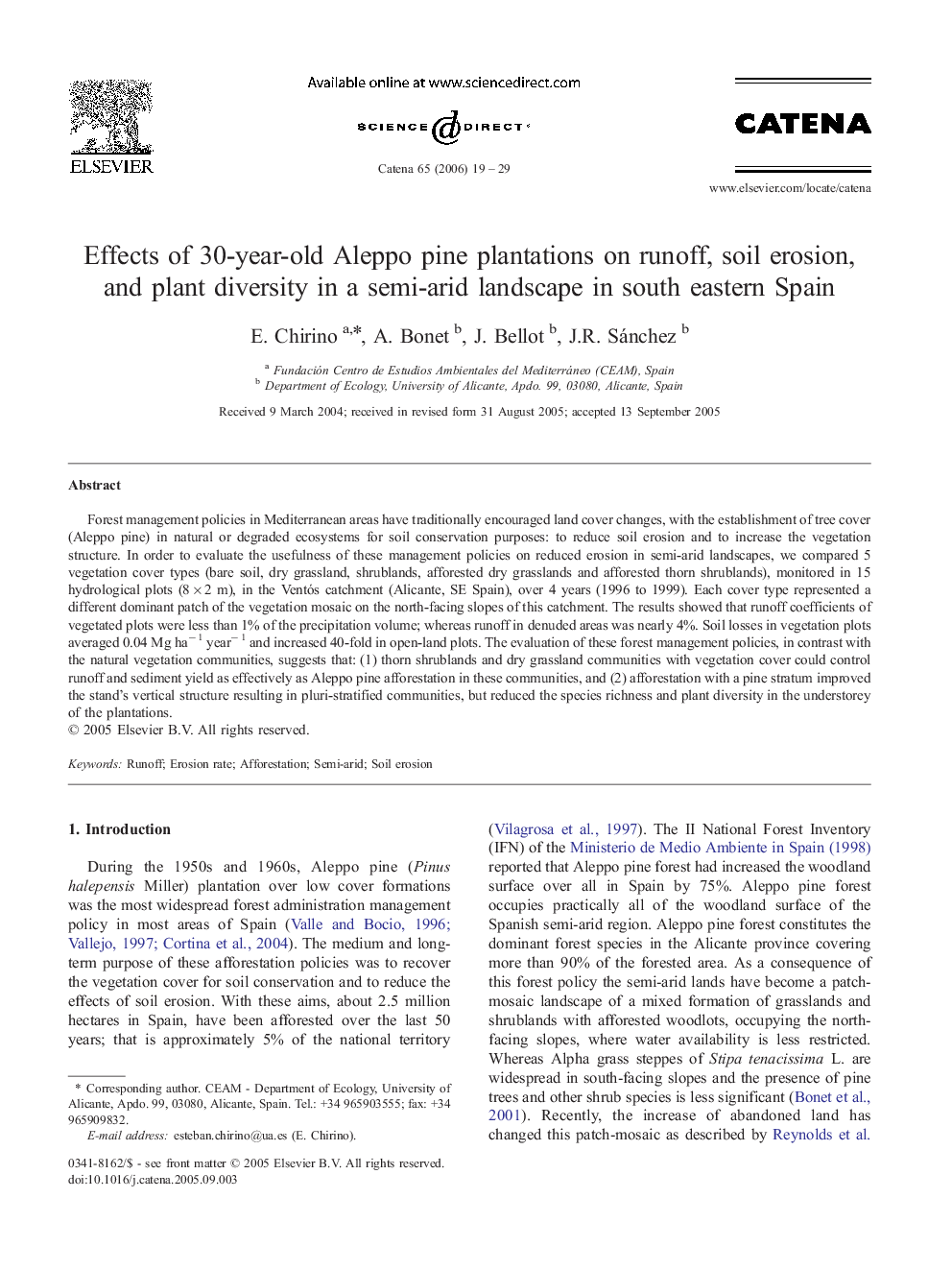| Article ID | Journal | Published Year | Pages | File Type |
|---|---|---|---|---|
| 4572776 | CATENA | 2006 | 11 Pages |
Forest management policies in Mediterranean areas have traditionally encouraged land cover changes, with the establishment of tree cover (Aleppo pine) in natural or degraded ecosystems for soil conservation purposes: to reduce soil erosion and to increase the vegetation structure. In order to evaluate the usefulness of these management policies on reduced erosion in semi-arid landscapes, we compared 5 vegetation cover types (bare soil, dry grassland, shrublands, afforested dry grasslands and afforested thorn shrublands), monitored in 15 hydrological plots (8 × 2 m), in the Ventós catchment (Alicante, SE Spain), over 4 years (1996 to 1999). Each cover type represented a different dominant patch of the vegetation mosaic on the north-facing slopes of this catchment. The results showed that runoff coefficients of vegetated plots were less than 1% of the precipitation volume; whereas runoff in denuded areas was nearly 4%. Soil losses in vegetation plots averaged 0.04 Mg ha− 1 year− 1 and increased 40-fold in open-land plots. The evaluation of these forest management policies, in contrast with the natural vegetation communities, suggests that: (1) thorn shrublands and dry grassland communities with vegetation cover could control runoff and sediment yield as effectively as Aleppo pine afforestation in these communities, and (2) afforestation with a pine stratum improved the stand's vertical structure resulting in pluri-stratified communities, but reduced the species richness and plant diversity in the understorey of the plantations.
